Australian Tropical Rainforest Plants - Online edition
Terminalia catappa L.
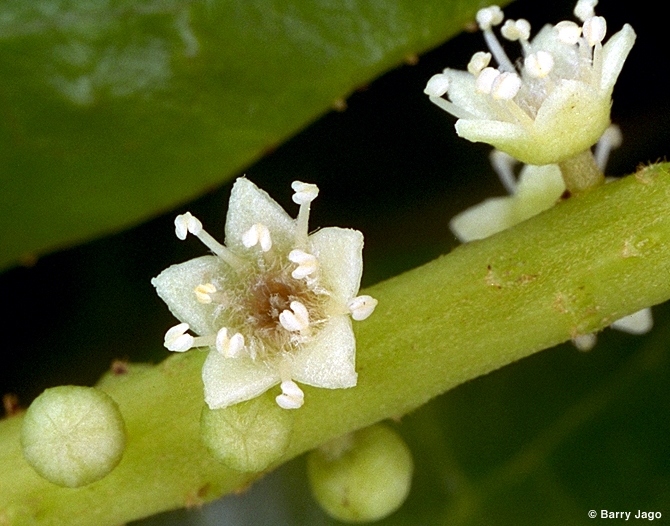

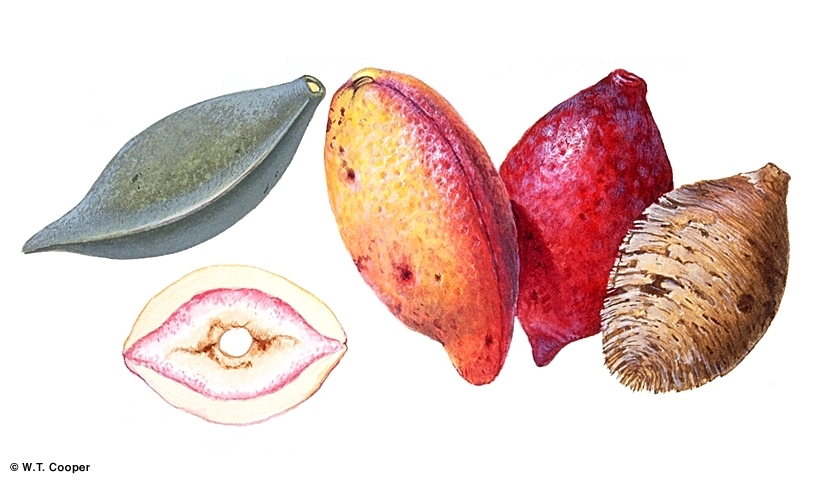
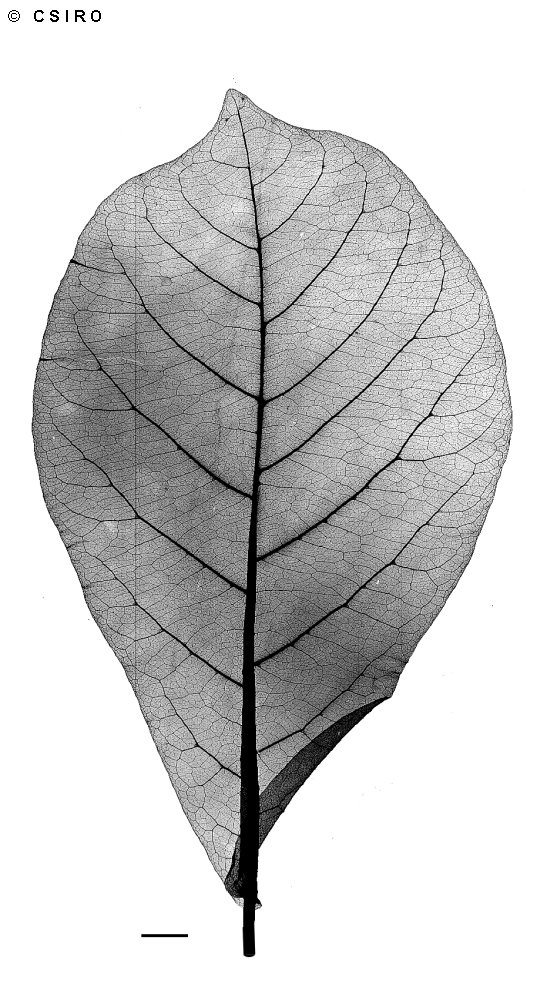
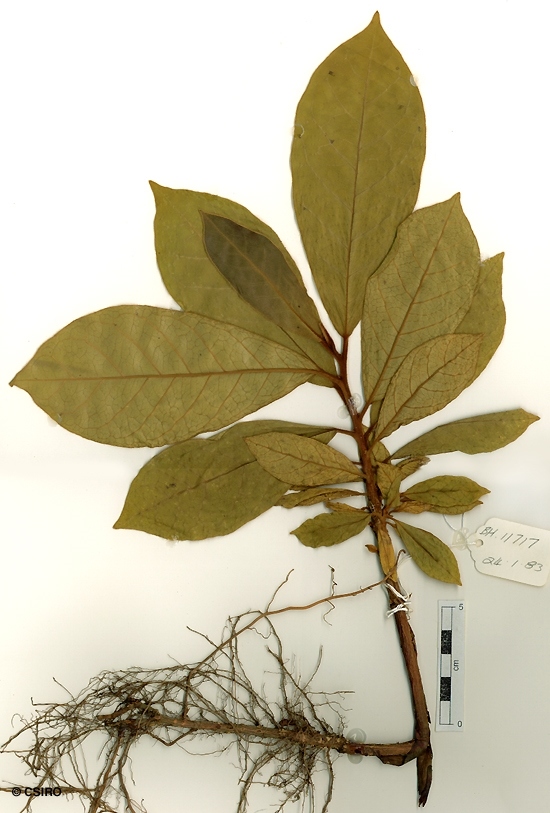
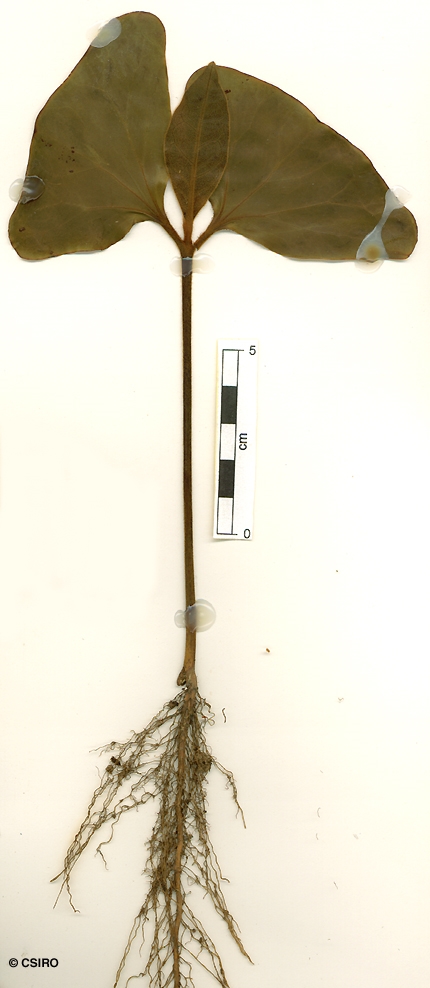
Linnaeus, C. von (1767) Mantissa Plantarum 1: 128. Type: holo: LINN 1222.1.
Indian Almond; Tropical Almond; Myrobalan; Country Almond; Almendro; Sea Almond
A tree with whorled branches like a pine tree (Pinus spp.). Deciduous; leafless for a period in September or October.
Leaf blade rather large, about 16-25 x 10-15 cm, petiole relatively short. Two flat nectar producing glands visible on the underside of the leaf blade at the very base, one on each side of the midrib. Terminal buds and young shoots densely clothed in brown hairs. Old leaves turn red prior to falling.
Cotyledons much wider than long, about 30-40 x 60-80 mm, base rounded, apex +/- truncate, hairy on the upper surface towards the base, distinctly 3-veined. At the tenth leaf stage: leaves obovate, apex acuminate, base cuneate, hairy on the upper surface; oil dots very small, visible only with a lens; petiole, stem and terminal bud densely clothed in long reddish brown hairs. Seed germination time 33 days.
Food plant for the larval stages of the Brown Awl Butterfly. Common & Waterhouse (1981).
This species has been used medicinally in India, the Philippines, Indonesia and New Caledonia. The leaves are regarded as a contraceptive. Cribb (1981).





